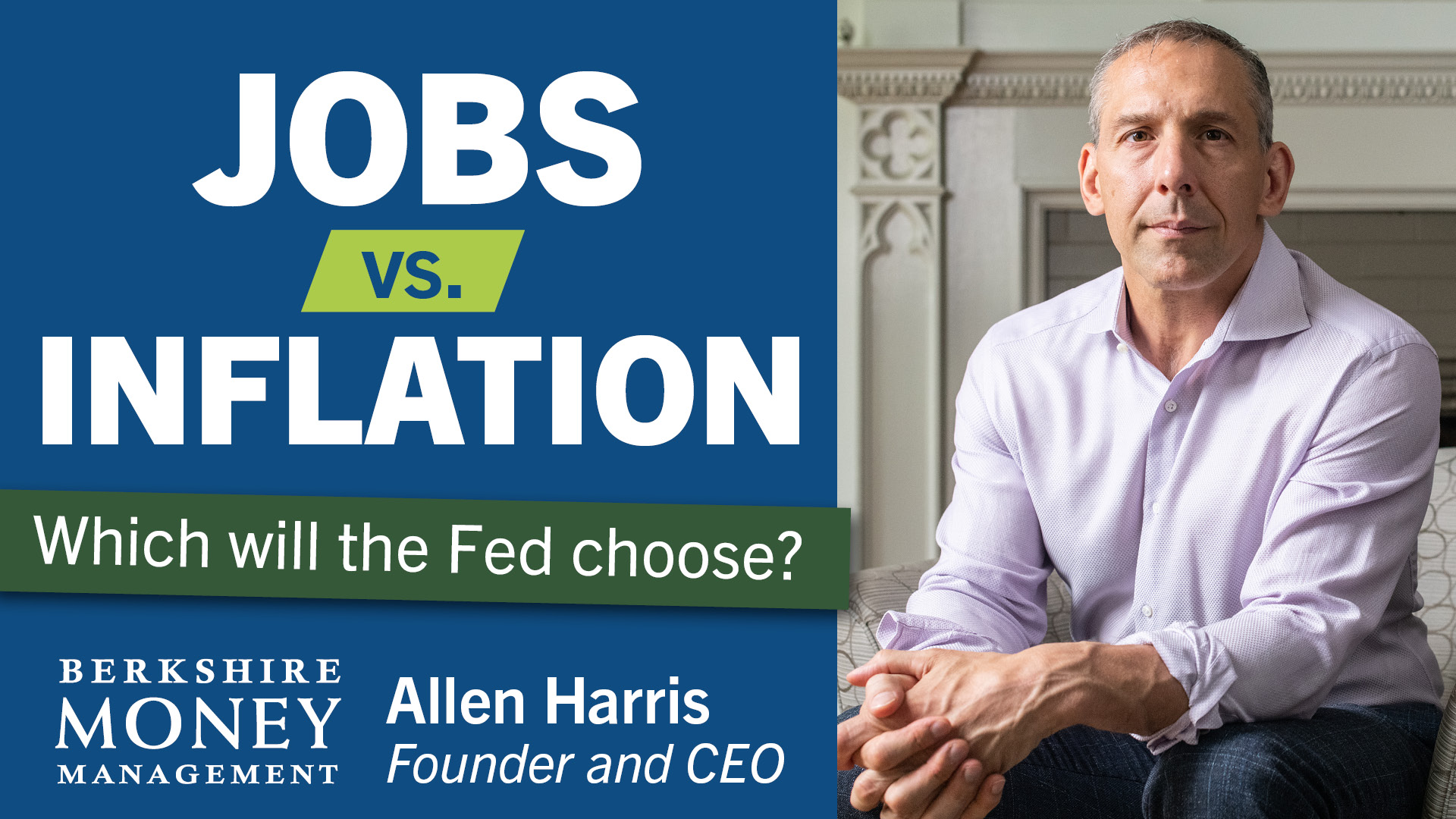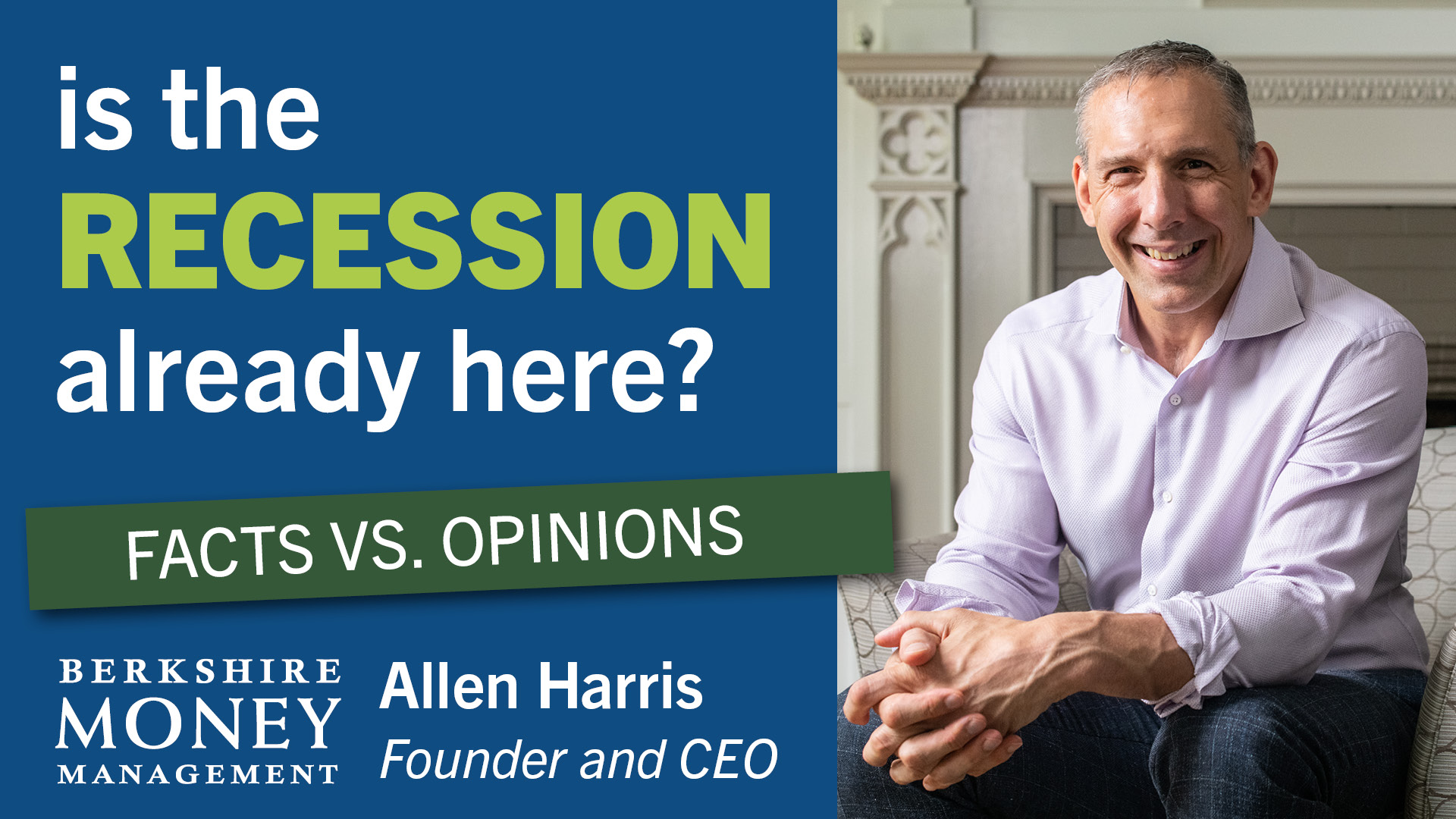ABCDEFU


Table of Contents
“I was into you, but I’m over it now. And I was tryin’ to be nice, but nothing’s getting through, so let me spell it out.”
—Gayle (to her ex)
and fixed-income experts (to Allen Harris)
Before I get into it, they say never bury the lead: There’s an increasing chance that the losses we’ve seen in the stock market will double.
On February 23, 2022, I opened the discussion of the 2022 Massachusetts RIA (Registered Investment Adviser) Summit in Boston. I didn’t make any friends in the fixed income world.
In this column, I write about politics (sometimes), the economy (mostly), and the stock market (when there’s news, and boy, has there been news lately). I don’t write about the bond market quite as much.
In part, I don’t write too much about bonds because it’s boring. I mean, how exciting is it to find a way to squeeze out an extra 20 basis points of return? And what the heck is a basis point? I could be generous and say that I’m sparing you. I’m probably sparing myself just as much from the humdrum of fixed income.
Besides … bonds are dead. Well, maybe that’s an exaggeration. There are different types of bonds, and some are still very much alive — like junk bonds.
What I said at the conference is, “The era of 60/40 is dead.” And that claim channeled the inner pop star of the fixed income experts in attendance.

The term “60/40” refers to the popular investment strategy of allocating 60% of a portfolio to equities and the other 40% to fixed income (aka bonds). Many people are devotees of the 60/40 strategy because it’s worked for the last four decades. What do I mean by “worked?” Well, a financial professional might tell you that the intent of the “40” of the 60/40 is to create a flow of income while simultaneously reducing the volatility of the overall portfolio.
Because the Fed intends to fight inflation, all eyes have been on the Federal Funds rate, which is currently floating between zero and 0.25%. Yeah, well, the average Federal Funds rate in 1980 was 16.39. You could have purchased a 30-year Treasury bond back around then. The yields 40 years ago were paying double-digits. Since then, yields have fallen; falling yields increase bond prices. For 40 years, bond investors have enjoyed a combination of generous yields and capital appreciation. That was then; this is now.
Now, interest rates are about as close to zero as you can get while remaining positive, and they are more likely to go up than down. Why would you possibly want to own a bond that pays you virtually nothing in yield, will likely go down in price, and is getting its lunch eaten by inflation?!
But wait, there’s more!
It’s the financial professionals who want the bonds, not the clients. Individual investors don’t care about bonds. When you go to the hardware store, you don’t want to buy a 1-inch drill. You want to buy a 1-inch hole. Bonds are just the drill, the tool. Investors don’t want bonds; they want what bonds used to provide. There had been an unwritten agreement that the bond investor was willing to sacrifice some level of return in exchange for less portfolio volatility.
Today, if 40% of your portfolio is invested in government and investment-grade corporate bonds, then you’re setting yourself up to lose your money slowly. And not just via price depreciation. When inflation exceeds 7%, then your 1-2% yield isn’t catching up.
At least that was my opinion.
The post-lunch session was called, “Utilizing and Implementing Fixed Income in Today’s Low-Interest Rate Environment.” And boy, did the panelists dislike me! There was a lot of controversy about what I said. The session was mostly about how wrong I was.
Maybe I was wrong. I said one thing. Five other smart people said something different. I would consider those five other people to be experts in the world of fixed income. Me? I’m just some local yokel with an opinion — other professional investors should give up on most U.S. government and investment-grade bonds and consider replacing them with the following:
- Junk bonds (higher inflation tends to mean fewer bankruptcies)
- Floating rate bonds (as interest rates rise, so do the yields on these bonds)
- Treasury Inflation-Protected Securities
- Covered calls
- Buffered funds
Currently, I am not using floating rate bonds or covered calls in a material way, FYI.
Listen, I get it – 60/40 has worked for four decades. It’s probably hard to take advice to abandon such a tried-and-true investment strategy. Fine. But do me a favor and talk to your financial advisor about shifting from 60/40 to something more like 80/20. And maybe see if your advisor thinks it’s a good idea to swap out those government and investment-grade bonds for some of those possibilities that I bullet-pointed. What’s the harm in a conversation?
My conference session was called “Market Outlook and Opportunities: How RIAs are positioning, managing risk, and growing client portfolios in domestic and global markets.” Here are some other topics I discussed.
Valuations
Valuations have improved but remain high. The price-to-earnings multiple of the S&P 500 dropped this year from about 24-times trailing earnings to about 20. While that’s better, relative to inflation, it is unattractive.
The latest reading of the Consumer Price Index, a measure of inflation, was 7.5%. Historically, the S&P 500’s average P/E is 11.6 when inflation is 6-8%. Let’s be optimistic and say inflation comes down to 4-6%. In that case, the average P/E has been 15.1. The market would have to drop about another 25% to attain a 15.1 P/E.
Foreign Stocks

This one might also fall under the category of “don’t take my advice.” I don’t seem to have a
conventional methodology for investing. What works for me won’t necessarily work for others. Either what I do isn’t appropriate for blah, blah, blah reasons, or maybe I’m just not prudent. I have a lot of respect for portfolio diversification and The Vanguard Group. Vanguard says, “to get the full diversification benefits, consider investing about 40% of your stock allocation to international stocks.”
Really though, who the heck am I to suggest ignoring advice from the venerable John Bogle? Nonetheless, I’ve stayed mainly out of the international markets for about a decade. For brief periods, I had stuck my toe into Chinese equities and the stocks of emerging markets. The last time I had a meaningful position in foreign stocks was about a decade ago. I had exposure to the MSCI EAFE (Europe, Australia, Far East) index.
Throughout the last decade, U.S. stocks have outperformed foreign stocks approximately six-fold. The result is relatively inexpensive foreign stocks. EAFE’s P/E is about 15, so it’s seemingly more attractive than the S&P 500. However, the S&P 500 is more appealing to me due to better U.S. corporate innovation and a strengthening U.S. dollar.
The 10-year Treasury Note
The yield of the 10-year Treasury Note, over the long run, equals (expected inflation) + (the expected path of short-term interest rates) + (the term premium).
It could be argued that the term premium is near zero. And the market has already built in the expected path of interest rates (the Fed just needs to ratify that move). So, the yield of the ten-year treasury is dependent upon inflation expectations.
According to Fed surveys, households expect inflation to adjust from 7.5% to 5% in one year, 3.5% in three years, and 2% in five years. Expectations are all over the place, so it’s hard to get a handle on where the 10-year yield is going. A range of 2-5% could be argued. Using the back of this cocktail napkin I am scribbling on, adjusting for a rise in term premium and the federal funds terminal rate, yada, yada, yada … I suspect the 10-year yield will get to about 3.5% in 2023.
Gasoline Prices

Russia’s attack on Ukraine, and the ramp-up to it, has caused the price of oil to skyrocket. Every $10 increase per barrel of oil means an increase of about 30 cents per gallon of gasoline. Every penny increase in the cost of gasoline means about $1.5 billion less consumer spending during the next 12 months.
Let’s say about $10 per barrel of oil sticks. That is 30 cents times $1.5 billion, or about $45 billion. This equates to roughly a one-quarter percentage point drag on U.S. Gross Domestic Product (GDP). Flipping over that cocktail napkin, the median oil price in 2021 was about $66 for a barrel. At the moment I am writing, it’s trading at $112. Oil has gotten to the point where, if it sticks, the adjustment in gasoline prices will reduce GDP by a full percentage point.
Peak Inflation
It’s socially unacceptable to suggest inflation is at its peak because it sounds so Pollyanna-ish. So let me be clear: I think the inflation growth rate will subside. In part, that’s cheating because we’ll be comparing new prices relative to previous higher prices in a few months. But also, high inflation tends to be self-limiting because it creates dynamics that slow inflation. For example, the 10-Year Treasury Note jumped 0.7 percentage points in seven months (until it recently retraced some of that trajectory). That pushes up rates on mortgages and other loans, which curtails spending. Also, the higher rates strengthen the dollar, reducing the cost of imported goods.
Getting Some Cash Invested
By February 23, 2022, the S&P 500 declined 11.9% on a closing basis (about 14.2% on an intraday basis). (Perhaps it’s more by the time you read this.)
I had previously guessed that “On May 22, 2022, the stock market will bottom after declining 15.1% from its high.”
We might have some more downside. Nonetheless, that was a big enough drop for me to get interested in putting more cash into equities. In response to that decline, I took a corporate distribution and invested that cash into my personal investment accounts, which currently only holds equities.
But keep in mind, I also said that “there is a two-in-10 chance that the stock market will drop closer to 20% around September 2022.” If anything, those odds have increased, not decreased. It’s not scientific, but it’s not arbitrary. I’d say the chances have doubled to four-in-10. Investor sentiment is so bad that we should get a bounce. However, the technicals are garbage (specifically the narrow leadership, as represented by the percent of stocks trading above their 30-week moving averages and the percent trading 20% or more below their 52-week highs, relative to the January 27, 2022 low ). Some things could save us, but as of right now, I’d argue that the market needs to go lower before investors jump back in to take advantage of low prices.
I don’t know your situation well enough to advise you to do the same as me. Still, I like to tell you what I’m doing so that you can talk to your financial advisor about it. I may lose money in the next week, month, or six months. However, after the stock market drops double-digits, I’d rather be a buyer than a seller.
Allen Harris is the owner of Berkshire Money Management in Dalton, Massachusetts, managing investments of more than $700 million. Unless specifically identified as original research or data-gathering, some or all of the data cited is attributable to third-party sources. Unless stated otherwise, any mention of specific securities or investments is for illustrative purposes only. Adviser’s clients may or may not hold the securities discussed in their portfolios. Adviser makes no representations that any of the securities discussed have been or will be profitable. Full disclosures. Direct inquiries: [email protected].
This column appeared originally in The Berkshire Edge on March 7, 2022.
Allen is the CEO and Chief Investment Officer at Berkshire Money Management and the author of Don’t Run Out of Money in Retirement: How to Increase Income, Reduce Taxes, and Keep More of What is Yours. Over the years, he has helped hundreds of families achieve their “why” in good times and bad.
As a Certified Exit Planning Advisor, Certified Value Builder, Certified Value Growth Advisor, and Certified Business Valuation Specialist, Allen guides business owners through the process of growing and selling or transferring their established companies. Allen writes about business strategy in the Berkshire Eagle and at 10001hours.com.







